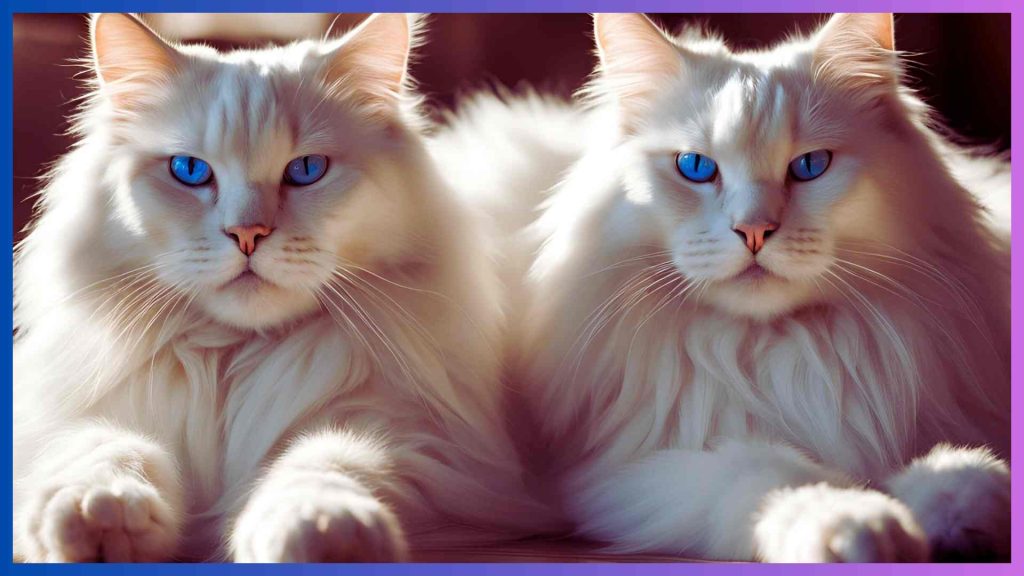As autumn’s crisp air rustles through leaves, my eyes meet a majestic creature. Its white coat shines in the fading light. The White Siberian cat has won hearts worldwide with its grace and charm. Their story is one of survival, adaptability, and a deep bond with Russia’s rugged landscapes.
Originating from Siberia’s snow-covered forests, these cats are built for harsh environments. Their thick coats and strong bodies show elegance despite the cold. But their true beauty lies in their smart, playful, and loyal nature.
The Majestic White Siberian Cat Breed
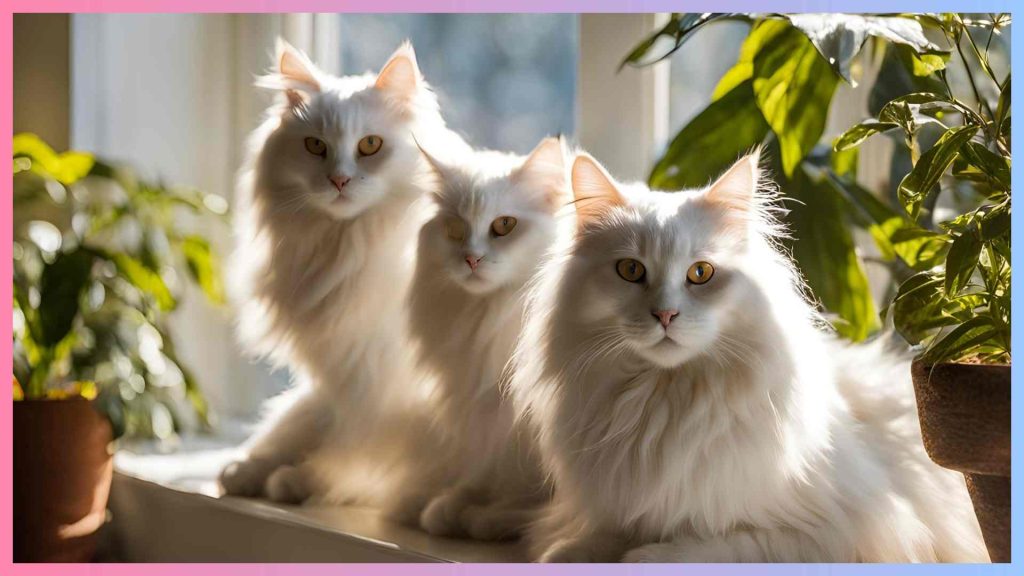
Origins and History
The Siberian cat is a natural breed from Russia, shaped by selective breeding. They might have a history spanning hundreds or over a thousand years. Some believe they mixed with other long-haired cats’ DNA.
In Russia, Siberians are seen as a national treasure. They are part of the country’s folklore and legends.
Physical Characteristics
Siberian cats have medium-sized bodies and strong muscles. They have a thick triple coat, more noticeable in cold weather. Their head is wedge-shaped but rounded, with medium-large ears and a medium-length tail.
Siberian cats can weigh up to 20 pounds.
The origins of Siberian cats go back to 1000AD. They became popular in Russia over time. In 1989, 12 Siberians were shown at the All Union Cat Show. They were introduced to the US in 1990.
The breed was accepted by TICA in 1992 and became a champion in 1996.
Regarding the Siberian cat’s physical traits, they have a unique triple-layered coat. This keeps them warm in cold weather. Their coat can be long, glossy, and water-resistant.
Siberian cats come in many colors and patterns, like tabby, solid, tortoiseshell, and colorpoint.
The size of Siberian cats is impressive. Males weigh 15 to 20 pounds, and females weigh 10 to 15 pounds. This makes them one of the largest domestic cat breeds.
In terms of Siberian cat appearance, they have a distinctive head shape and medium-large ears. Their medium-length tail is wide at the base and tapers to a blunt tip. Their muscular build and thick coat make them look majestic and regal.
Personality Traits of White Siberian Cats
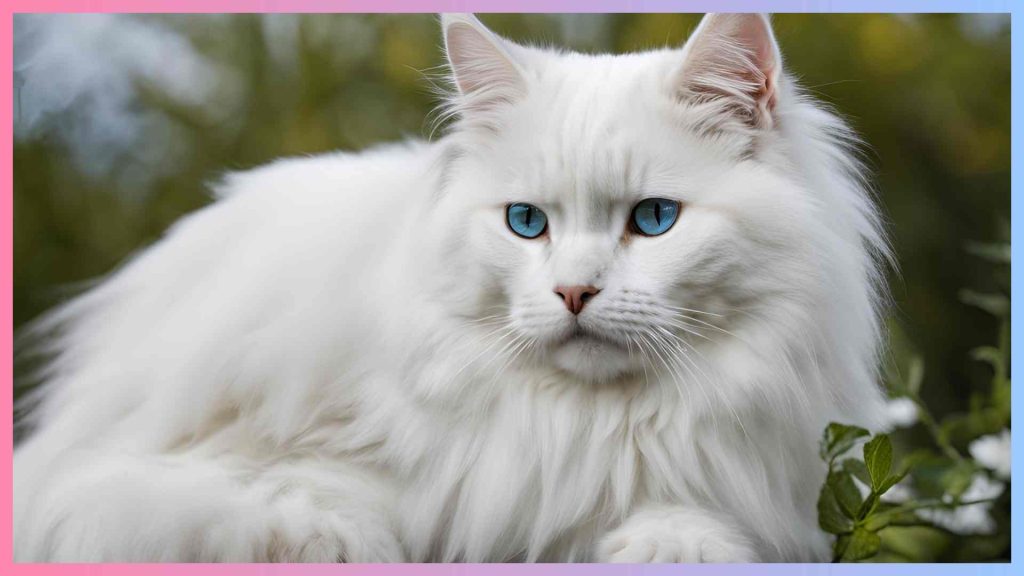
Siberian cats are known for being smart and playful. They also love to be around people and enjoy talking to them. They make sounds that sound like they’re having a conversation.
These cats are not usually naughty, but they like to check out their surroundings. They might get into things sometimes. But mostly, they like to watch their people and give them advice with their meows.
Even though they are full of energy, Siberian cats also have a calm side. This side might take a few years to show up. They don’t fully grow up until they are about five years old.
- Siberian cats are known for their intelligent and playful nature.
- They are affectionate and friendly, thriving on attention and interaction with their human companions.
- Siberian cats enjoy exploring their surroundings, but are not considered overly mischievous.
- They have a melodic vocal range, often engaging in “conversations” with their favorite people.
- While energetic and playful, Siberian cats also have a mellow side that may take time to become apparent as they mature.
The siberian cat temperament, siberian cat personality, and siberian cat behavior are all special. They mix intelligence, love, and fun, making them great friends for many people.
Grooming and Care for a White Siberian Cat
Having a white Siberian cat means you need to groom them often. Their thick, triple-layered coat needs brushing and baths to stay white. This keeps their fur looking great.
Brushing and Bathing
Siberian cats usually don’t get tangled, even without brushing. But, they shed a lot when the weather changes. Brush them twice a week to keep their coat clean and prevent mats.
They might not like baths, but they need one when they get dirty. Use a gentle shampoo and make sure to rinse well. Dry them gently with a towel and let their coat air dry.
Nail Trimming and Dental Care
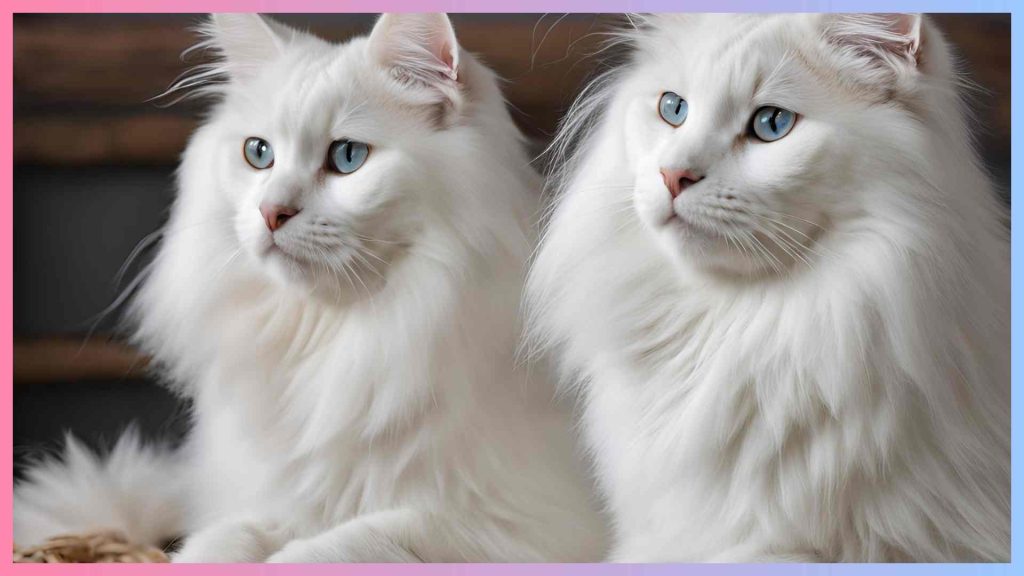
- Because they’re playful and active, they might damage things. Regular nail trims help prevent this.
- Trimming their nails at home or by a groomer costs about $10.
- Teach them to let you brush their teeth. Use a soft toothbrush and cat-safe toothpaste.
| Grooming Task | Frequency | Cost |
|---|---|---|
| Brushing | 2 times per week | Free (at home) |
| Bathing | As needed (when visibly dirty) | Free (at home) |
| Nail Trimming | Every 4-6 weeks | $10+ (groomer) |
| Dental Care | Daily | Free (at home) |
Regular grooming keeps your white Siberian cat’s coat, nails, and teeth healthy. It’s important for their overall well-being.
White Siberian Cats Make Wonderful Family Pets
Siberian cats are known for being friendly and patient. They make great pets for families with kids. They are usually okay with young children and even enjoy the attention they get.
These cats also get along well with other pets, like dogs and cats. They are naturally social and like to have friends around.
Patient and Tolerant With Children
Siberian cats are gentle and loving, making them perfect for families. They are patient and let kids play with them without getting upset. Their calm nature and love for attention make them great family pets.
Get Along Well With Other Pets
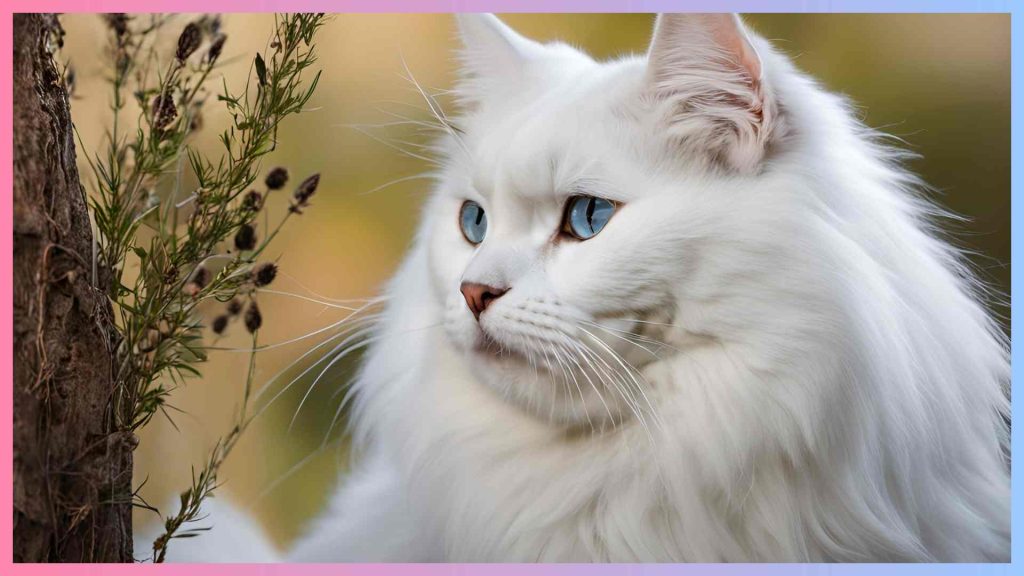
Siberian cats also live well with other pets, such as dogs and cats. They are social and get along with others. But, they do need someone to spend time with them, so having another cat can be a good idea if you’re away a lot.
In short, Siberian cats are wonderful family pets. They are friendly, patient, and get along with others. They will be loving companions for many years.
White Siberian Cats: The Hypoallergenic Breed
For those with cat allergies, finding a feline friend can be tough. But, the Siberian cat breed is a special solution. They are considered hypoallergenic because they make less of the Fel D1 protein. This protein is a common allergen found in cat saliva and dander.
Siberians shed less and make fewer allergens than many other cats. This makes them a good choice for people with allergies who still want a furry friend. While no cat is completely hypoallergenic, Siberians can make a big difference for those with sensitivities.
Other hypoallergenic cat breeds include Siamese, Bengal, Russian Blue, Sphynx, Devon Rex, Balinese, Oriental Shorthair, Burmese, and Tonkinese. Each breed has its own special traits and personalities. They can fit into different families and lifestyles.
If you’re looking for a low-allergen cat, the Siberian is worth considering. They have a beautiful appearance, are very affectionate, and might be hypoallergenic. With the right care and grooming, Siberian cats can be loving companions for households with allergies.
| Hypoallergenic Cat Breed | Allergen Production | Personality Traits |
|---|---|---|
| Siberian | Low | Affectionate, intelligent |
| Siamese | Moderate | Vocal, playful |
| Bengal | Low | High-energy, adventurous |
| Russian Blue | Low | Calm, reserved |
| Sphynx | Low | Outgoing, curious |
Unique Traits of White Siberian Cats
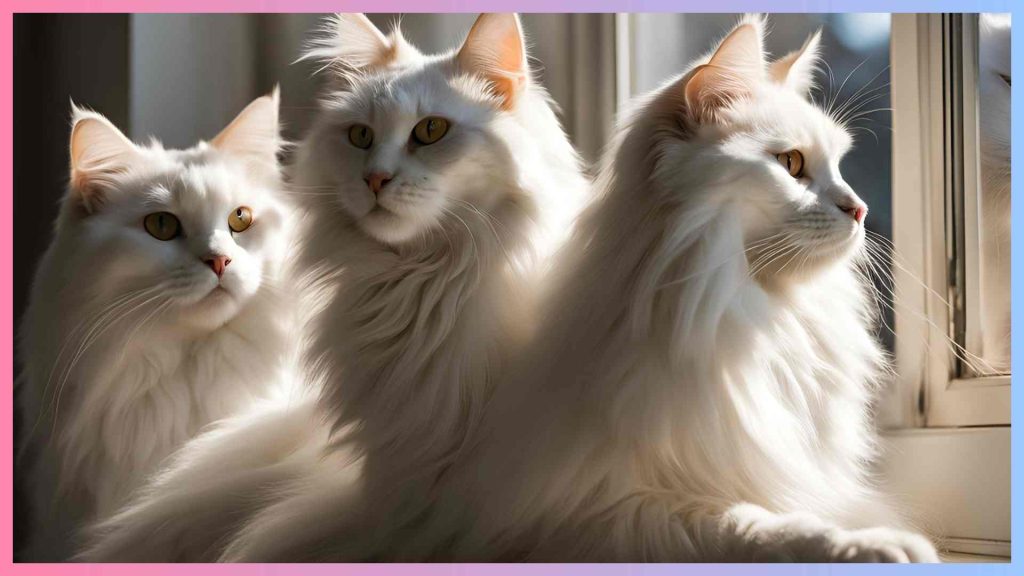
White Siberian cats have more than just their beautiful, snowy coats. They also have unique traits that make them stand out. One of their most special features is their love of water and swimming. Despite their thick fur, they love to play in water and even join their owners in the shower.
Another unique trait is their melodic vocalizations. Unlike some cats, Siberians make chirps, trills, and “conversations” with their humans. This creates a soothing, musical sound that everyone loves.
- Siberian cats are known for their love of water and swimming, often joining their owners during shower time.
- These felines have a unique set of melodic vocalizations, including chirps, trills, and “conversations” with their human companions.
White Siberian cats are special because of their love for water and their beautiful voices. They are truly unique and wonderful companions.
White Siberian Cats
The Siberian cat breed comes in many colors and patterns, but white is rare. This color is due to the W gene, which hides other colors and patterns. This results in a coat as white as snow. White Siberian cats can have blue, green, yellow, or orange eyes, or even a mix of these.
These cats stand out with their white coats and striking eyes. They have a regal look with soft, dense fur. Their bright blue or golden eyes will surely win your heart.
Interestingly, Siberian cats, including the White variety, are hypoallergenic. They produce less Fel d 1 protein, which can cause allergies. This makes them a great choice for those with allergies who still want a cat.
FAQ
Q: What are the key characteristics of the Siberian cat breed?
A: Siberian cats are medium-sized with a semi-long hair coat. They have a stunning triple coat and a charming personality. They are smart, playful, and friendly with everyone.
Q: Where do Siberian cats originate from?
A: They come from Russia and are a national treasure there. They have a rich history in Russian folklore and legends.
Q: How do Siberian cats typically behave?
A: They are very affectionate and friendly. They love to give and receive attention. They also have a unique way of talking through their sounds.
They are not mischievous but love to explore. They share their thoughts with chirps and trills.
Q: How do Siberian cats require grooming?
A: Their thick triple coat is easy to keep tangle-free. Brushing more often is needed when they shed. Regular nail and teeth care is also important.
Q: How are Siberian cats as family pets?
A: They make great family pets, being tolerant and loving. They enjoy being around children and other pets. They are naturally friendly and communal.
Q: Are Siberian cats considered hypoallergenic?
A: Yes, they are considered hypoallergenic. Their saliva has less Fel D1, a common allergen. This makes them a good choice for those with allergies.
Q: What are some unique traits of the Siberian cat?
A: They love water and can even swim. Their coats are water-resistant. They also have beautiful melodic voices, often chatting with their owners.
Q: What are the different coat colors and patterns of Siberian cats?
A: They come in many colors and patterns. But pure white is rare. This color is due to a special gene that hides other colors.
White Siberians can have blue, green, yellow, or orange eyes. Sometimes, they have a mix of these colors.

